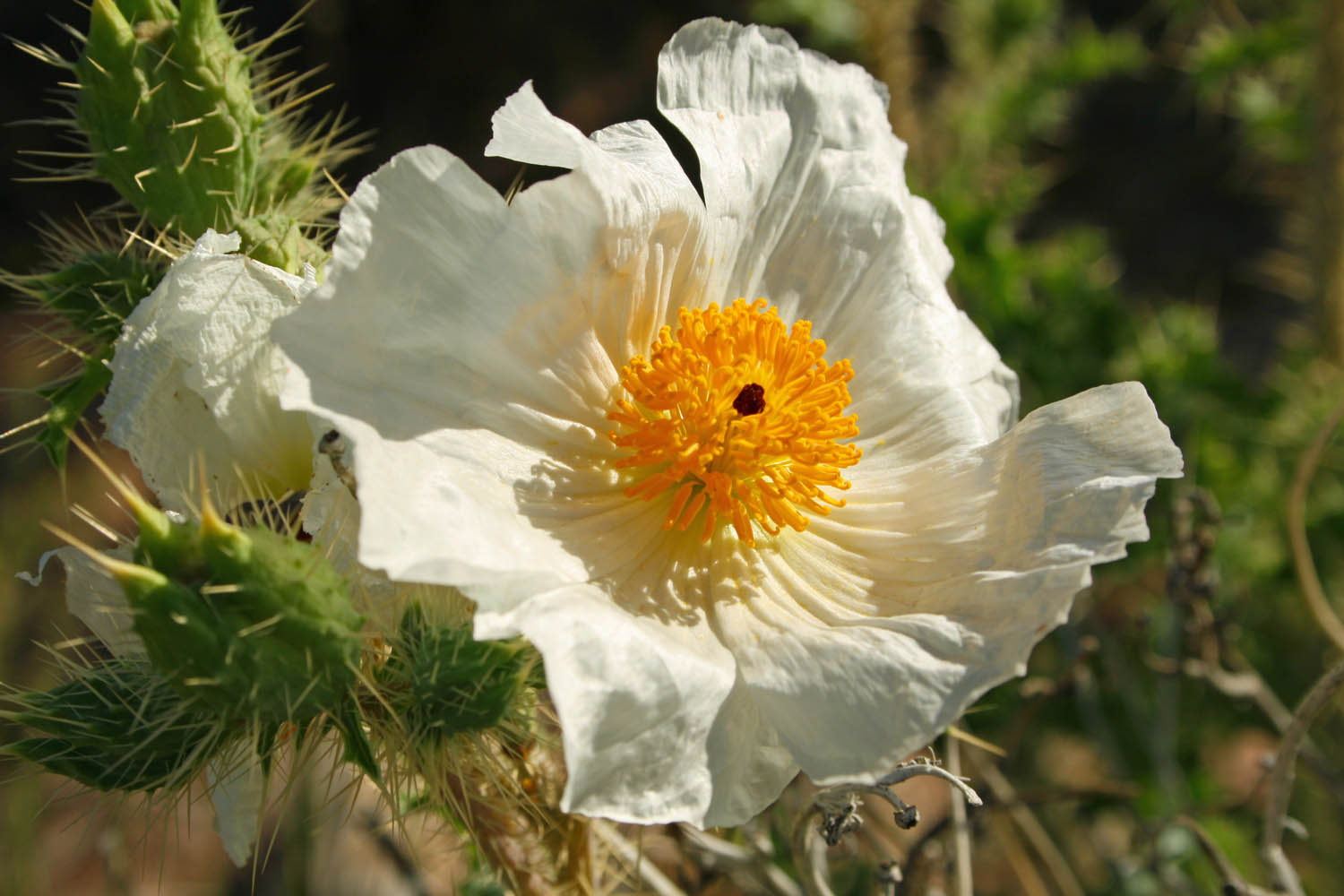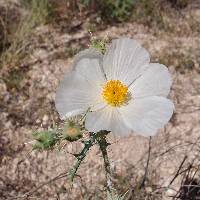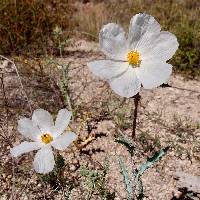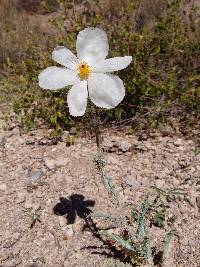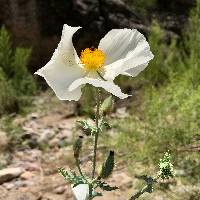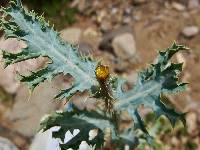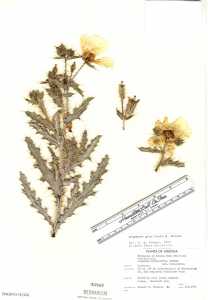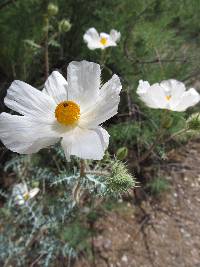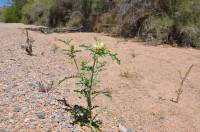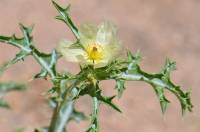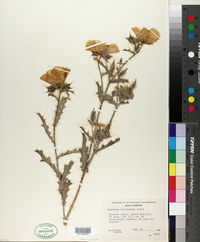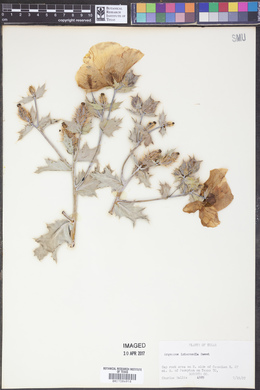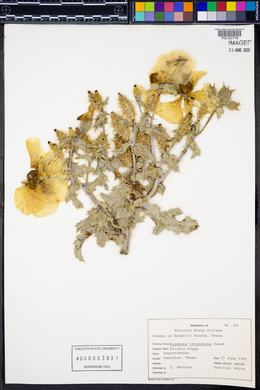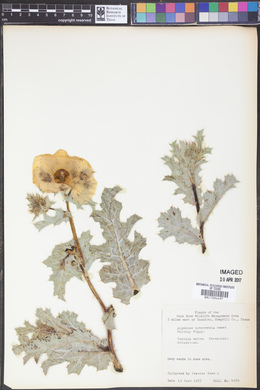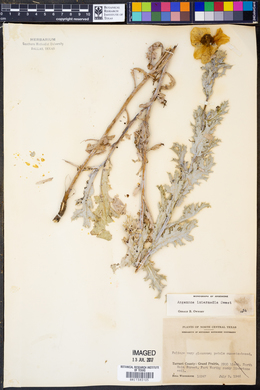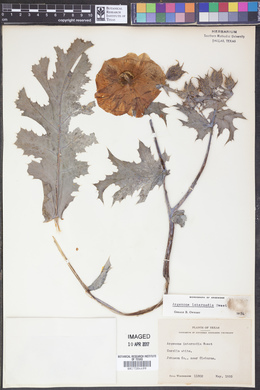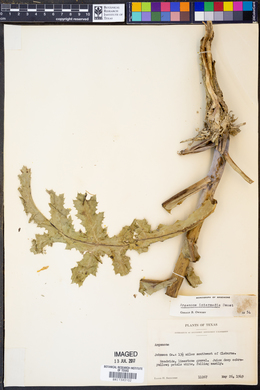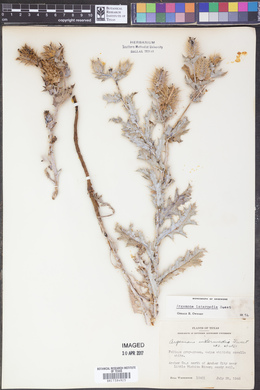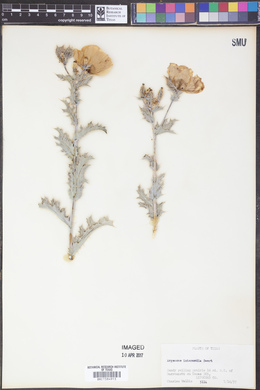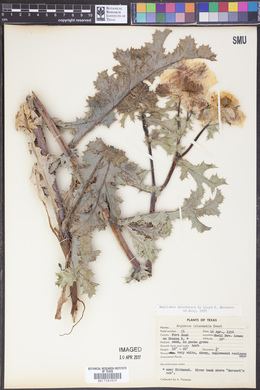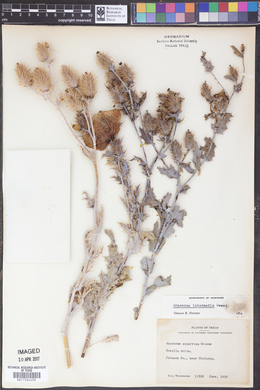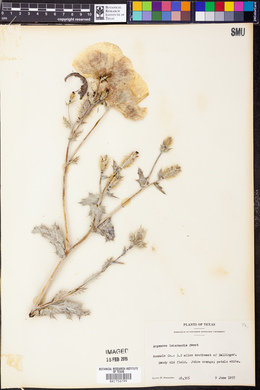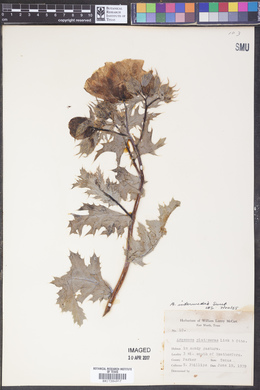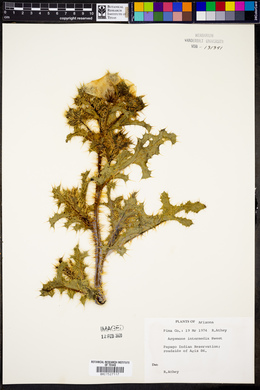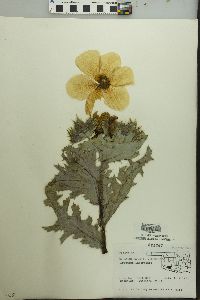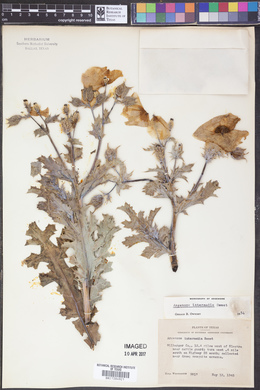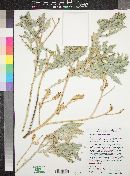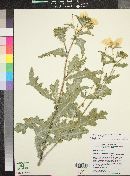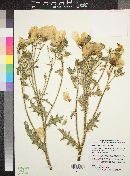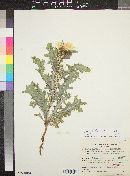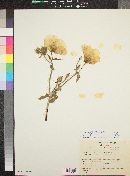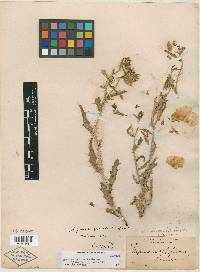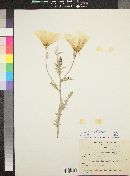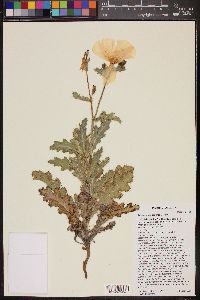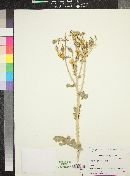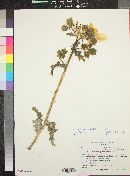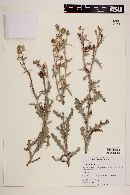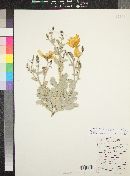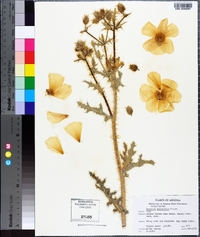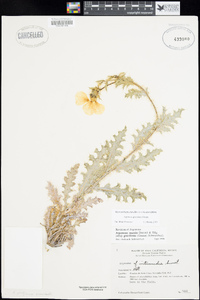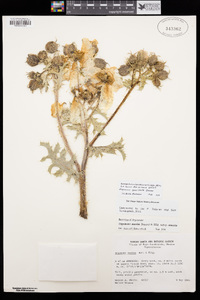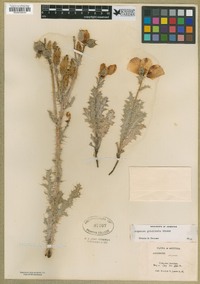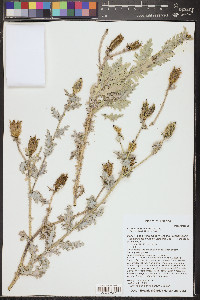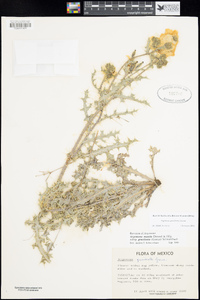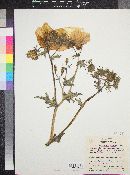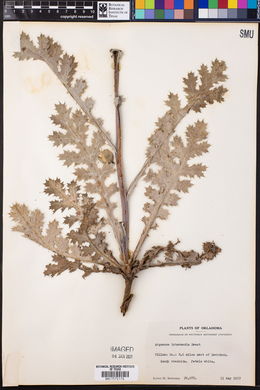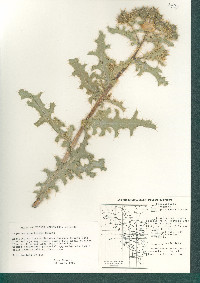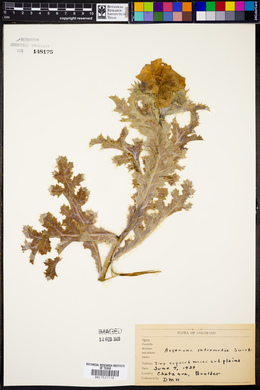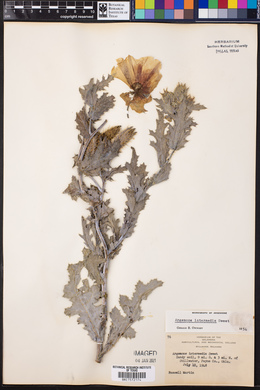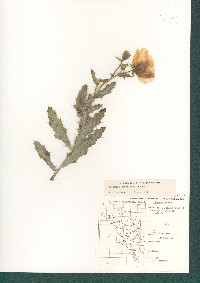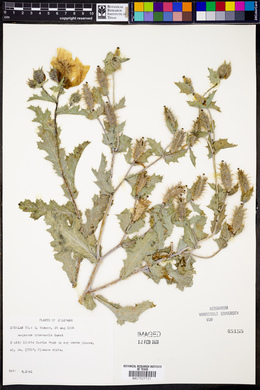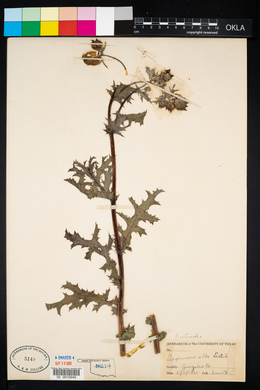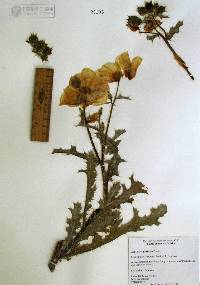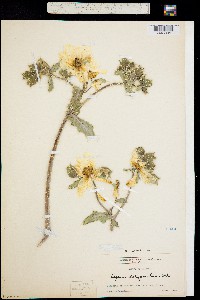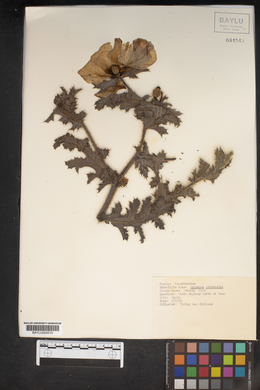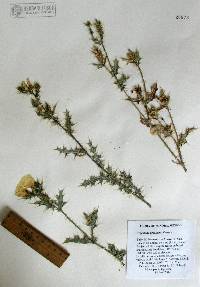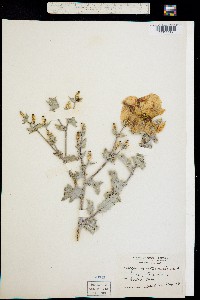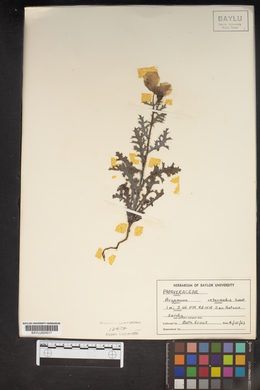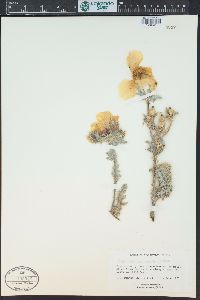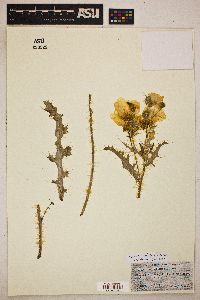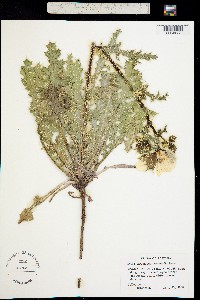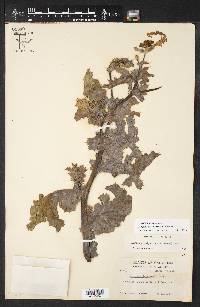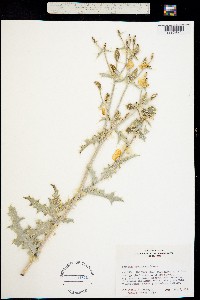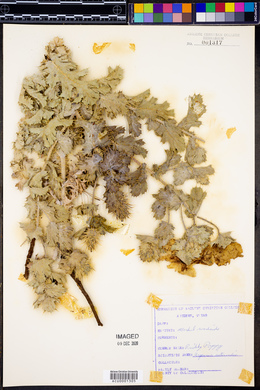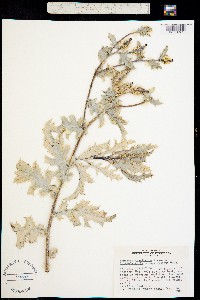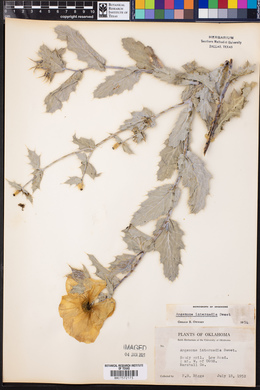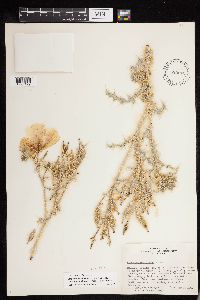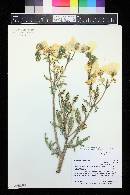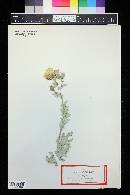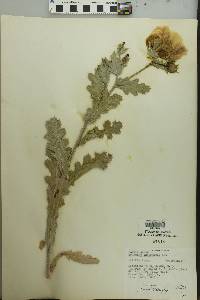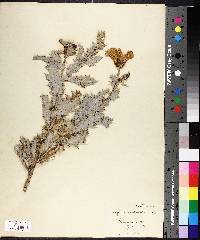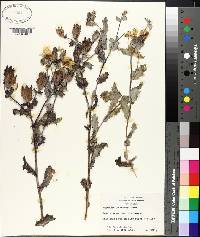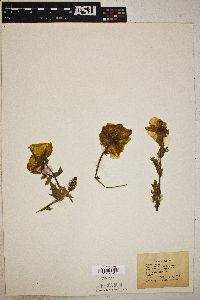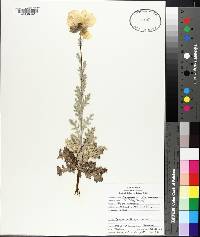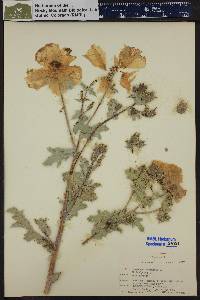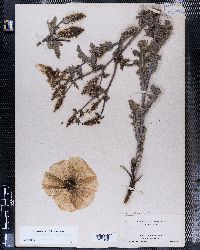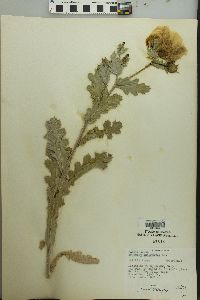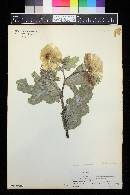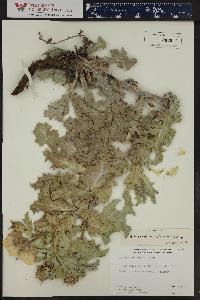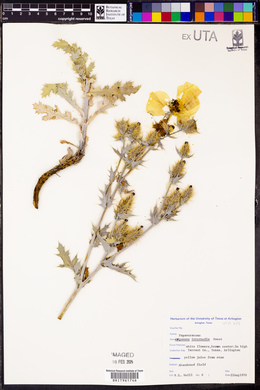Argemone gracilenta
|
|
|
|
Family: Papaveraceae
Sonoran Prickly-Poppy, more...Sonoran pricklypoppy, prickly poppy, Sonoran prickly poppy (es: cardo, chicalote)
[Argemone intermedia Sweet] |
Plants perennial. Stems 4-12(-18) dm, moderately prickly throughout, prickles patent, longest 7-10 mm. Leaf blades: abaxial surface prickly on main veins, adaxial surface unarmed or sparingly prickly on midrib; basal blades shallowly to often deeply lobed; distal not clasping. Inflorescences: buds subglobose to oblong, body 15-18 × 12-15 mm, sparingly prickly, prickles patent; sepal horns usually slender, terete, (5-)8-12(-14) mm, unarmed or with 1-2 prickles near base. Flowers 6-9 cm broad; petals white; stamens about 150; filaments pale yellow; pistil 3-4-carpellate. Capsules narrowly ellipsoid to narrowly ellipsoid-ovoid, 30-45 × 8-14 mm (including stigma and excluding prickles), scattered-prickly, surface clearly visible, longest prickles 6-8(-10) mm. Seeds to 2 mm. 2 n = 28. Flowering spring; fruiting spring-summer. Washes and outwash plains, deserts; 0-900 m (s to n); Ariz.; Mexico (Sonora and Baja California). Plant: shrub or herb; STEMS glaucous green, with 5-25 perpendicular or declinate prickles per square cm of surface, the largest 7-10 mm long Leaves: prickly on the veins, about 3-15 prickles per square cm of surface below, 0-5 prickles per square cm above; lower and middle cauline leaves lobed one-fourth to four-fifths to the midrib, the lobes one or two times as long as wide, the margin angular at the apex, the sinuses and lobes subequal in width; uppermost leaves shallowly lobed or dentate, half-clasping INFLORESCENCE: cymose Flowers: buds subspherical before anthesis; calyx with 10-30 mostly ascending prickles per sepal, the sepal horn 7-12 mm long, with 0-4 prickles near its base, typically terete when fresh, the apical prickle usually not basally flattened or enlarged; petals white; stamens 150 or more Fruit: CAPSULES narrowly elliptic, with 20-50 prickles per square cm of surface, the largest prickles 5-10 mm long; SEEDS numerous, pitted Misc: Deserts and foothills; 50-1050 m (100-3500 ft); Mar REFERENCES: Ownbey, Gerald B., Jeffrey W. Brasher, and Curtis Clark. 1998 Papaveraceae. J. Ariz. - Nev. Acad. Sci. 30(2): 120. FNA 2012, Kearney and Peebles 1969 Duration: Perennial Nativity: Native Lifeform: Forb/Herb General: Herbaceous perennials, to 2 m tall, stems stout, erect, leafy, solitary or branching, armed with sharp, reddish spines and moderately prickly throughout, prickles patent, the longest 7-10 mm. Leaves: Alternate, basal leaves in a basal rosette, shallowly to often deeply lobed, cauline leaves unlobed or commonly shallowly to deeply lobed with dentate margins, each tooth terminated by a prickle, surfaces glaucous and often mottled over the veins, lower surfaces prickly on the main veins, upper surfaces unarmed or sparingly prickly on midribs, uppermost blades not clasping. Flowers: White, large and showy, 6-9 cm broad, with 6 delicate white petals with rounded tips in 2 whorls of 3, buds subglobose to oblong, the body 15-18 long and 12-15 mm wide, with sparingly prickly surfaces, sepals 2-3, unarmed or prickly, each with an erect, subterminal, hollow horn tipped with a prickle, sepal horns usually slender, terete, 5-14 mm long, unarmed or with 1-2 prickles near the base, stamens about 150, filaments pale yellow, pistils 3-4-carpellate, ovaries 1-locular, styles short, to 3 mm long in fruit, stigmas 3-7-lobed, infloresences terminal, cymose, with subtending bracts. Fruits: Capsules narrowly ellipsoid to narrowly ellipsoid-ovoid, 30-45 mm long and 8-14 mm wide (including the stigmas and excluding the prickles), the longest prickles 6-10 mm long, fruits erect and dehiscing from apex, surfaces scattered-prickly and still clear Ecology: Found in washes, outwash plains, and desert communities, from 1,500-5,000 ft (457-1524 m); flowering most of the year. Distribution: South Dakota and Wyoming to Arizona and Mexico. Notes: This armed desert-dweller enjoys sandy washes and roadsides, and has delicate white flowers with large rounded petals and yellow throats, and is densely prickly throughout. The fruits are also sparsely spiny, without thick, hard walls (if so, see A. platyceras). Look for this species under A. intermedia in Kearney and Peebles. Ethnobotany: Specific uses for this species are unknown, but other species in the genus have uses. Synonyms: Argemone intermedia Editor: LCrumbacher2012 Etymology: Argemone comes from the Greek argemos, "a white spot (cataract) on the eye," which this plant was once supposed to cure, and gracilenta means slender. |
|
|
|

